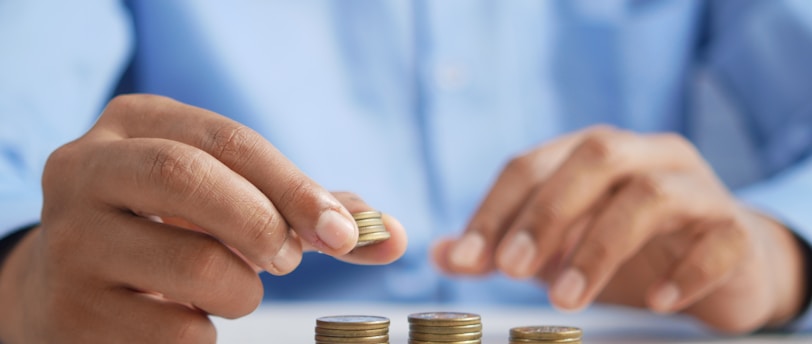How to Start Stacking Silver on a Budget
Looking to start stacking silver without spending thousands? This beginner-friendly guide breaks down the best affordable silver options — from junk coins and sterling finds to rounds, bars, and American Silver Eagles. Learn how to budget, store, and grow your silver stack the smart way while avoiding costly mistakes.
SILVER BASICS
10/13/20255 min read


If you’ve been watching silver prices rise and wondering how to get started without breaking the bank, you’re not alone. Many first-time investors and collectors start their precious-metals journey with silver because it’s affordable, accessible, and practical for both saving and bartering. The good news? You don’t need thousands of dollars to start stacking silver. You just need a plan — and an understanding of which types of silver offer the best value for your goals.
This guide breaks down everything you need to know about silver stacking for beginners and gives you realistic, budget-friendly steps to build your first stack with confidence.
Step 1: Understand Why You’re Stacking
Before you buy your first ounce, take a moment to understand why you’re stacking.
• Are you preparing for long-term savings or wealth preservation?
• Do you want physical assets you can use in a financial emergency?
• Are you simply interested in collecting coins and learning about metal value?
Your motivation will determine which type of silver is right for you. For example, someone focused on low-cost silver investing might choose generic rounds or junk silver, while a collector may prefer Silver Eagles or vintage sterling pieces.
Step 2: Start with Junk Silver — The Everyday Hero
If you’re on a tight budget, start with junk silver.
“Junk silver” refers to pre-1965 U.S. coins like dimes, quarters, and half dollars that contain 90% silver. These coins aren’t junk at all — the term simply means they have no collectible (numismatic) value. Their worth comes entirely from their silver content.
A major advantage of junk silver is flexibility. In an emergency or barter scenario, small coins can be traded for essentials like food, gas, or supplies — something that’s hard to do with large silver bars. Because they’re already divided into small, recognizable pieces, junk silver is considered a “spendable” form of wealth.
However, junk silver and modern coins can look similar. To identify real silver coins:
1. Check the Date — Quarters, dimes, and half dollars dated 1964 and earlier are made of 90% silver. Kennedy half dollars dated 1965–1970 contain 40% silver.
2. Inspect the Edge — Silver coins have a solid silver edge, while clad coins have a visible copper stripe along the rim.
💡 Tip: A full “junk silver bag” (around $1,000 face value) contains about 715 ounces of silver, but you don’t need that much. Many dealers sell small lots — $10, $20, or $50 face value — making it easy to start small.
Pros:
• Great for barter or small trades
• Low premiums over spot
• Easy to verify and recognize
Cons:
• Heavily circulated coins may show wear
• Requires basic knowledge of pre-1965 denominations
Step 3: Add Some Sterling Silver for Variety
Sterling silver items — like old spoons, jewelry, or trays — are made from 92.5% silver. While not ideal for bulk investing, they’re an underrated entry point for beginners who want to accumulate silver without paying dealer premiums.
You can often find sterling silver at thrift stores, pawn shops, or estate sales. Look for the hallmark “.925” stamped on the piece to confirm purity.
Sterling isn’t as convenient to store as coins or bars, but it’s a fun way to build weight affordably — especially if you enjoy hunting for deals.
Pros:
• Often below spot price
• Easy to find locally
• Great for hands-on collectors
Cons:
• Must verify purity
• Not ideal for quick resale
Step 4: Learn the Difference Between Rounds and Bars
Once you have some junk and sterling silver, it’s time to add silver rounds or bars. This is where many new stackers make their first big decisions.
Silver Rounds
Silver rounds are privately minted, non-government coins that contain 1 troy ounce of .999 fine silver. They typically sell for just a small premium over spot — making them one of the best options for low-cost silver investing.
They’re also highly liquid because they’re standardized, easy to verify, and produced by reputable mints such as Sunshine Mint, Silvertowne, or Asahi. When buying rounds, I like to stick with Buffalo designs. They’re widely recognizable and trusted — unlike novelty or holiday designs, which can be harder to resell.
Pros:
• Lowest premium per ounce
• Easy to buy and sell
• Stackable and uniform
Cons:
• Not legal tender
• Slightly less recognizable than government coins
Silver Bars
Silver bars might seem like the most efficient way to stack, but they come with an important caveat: low resale premiums.
While bars often cost less upfront, dealers usually pay less when buying them back — especially if the bar comes from an unfamiliar mint. That means their resale value can lag behind rounds or coins. If you do buy bars, stick to well-known brands. These are more trusted and maintain value better.
Pros:
• Low upfront cost
• Great for bulk stacking
• Compact and easy to store
Cons:
• Dealers pay less on resale
• Counterfeits exist from lesser-known mints
Step 5: Don’t Overlook American Silver Eagles
The American Silver Eagle (ASE) is the official silver bullion coin of the United States. Each coin contains 1 troy ounce of .999 fine silver and has a face value of $1.
Eagles carry the highest premium — sometimes $8–$12 above spot — but there’s a reason for that: trust and recognition. The U.S. Mint’s guarantee makes ASEs one of the most liquid silver products in the world.
In a crisis, you can show someone an Eagle and they’ll instantly know it’s real. That kind of recognizability can be worth paying a bit extra for.
Pros:
• Globally trusted and easy to sell
• Backed by the U.S. Mint
• Beautiful and collectible design
Cons:
• High premiums compared to rounds
• Not ideal for stacking in large volume on a tight budget
Step 6: Set a Budget and Stay Consistent
Consistency matters more than quantity when it comes to building your silver stack. Whether you can afford $25 a week or $100 a month, the key is making stacking a habit.
You can start with:
• $20–$30: 1–2 junk silver quarters or a fractional round
• $50–$100: 1 oz round or bar
• $200–$300: a small starter mix of rounds, junk silver, and maybe one Silver Eagle
Avoid the temptation to “time the market.” The point of silver stacking is to preserve wealth over time, not chase short-term profits. Only buy what you can comfortably hold — silver is for saving, not selling for next month’s bills.
If you do need to sell, understand you’ll likely lose some value in dealer premiums and spreads — which is why steady, intentional stacking beats impulse buying every time.
Step 7: Store and Track Your Silver Safely
Once you start stacking, protect it. Store your silver in airtight tubes or coin flips, and keep it in a cool, dry, and secure place — ideally a safe or lockbox.
Keep a simple stacking journal or spreadsheet that tracks:
• Type of silver
• Weight
• Purchase date and price
• Current spot value
Tracking your stack helps you stay organized and see your progress — even when silver prices fluctuate.
Final Thoughts: Stack Smart, Not Fast
Silver stacking is one of the most rewarding ways to build tangible wealth, but there’s no need to rush. Whether you start with a handful of junk silver coins or your first Silver Eagle, every ounce counts.
If you’re serious about low-cost silver investing, focus on coins and rounds with small premiums, avoid overpriced collectibles, and build slowly over time.
Junk silver and silver rounds are excellent entry points for beginners, while Silver Eagles offer trust and liquidity as your stack grows. Silver bars can help you accumulate bulk weight cheaply — just remember their resale value isn’t as strong as coins.
Mix and match based on your goals, stay disciplined, and keep stacking. Over time, your budget-friendly silver strategy can evolve into a solid foundation for financial independence and real, tangible wealth.
Silver remains one of the best entry points for new investors — we compare it directly with gold in Gold vs Silver: Which Is Better for Beginners.
If you’re exploring diversification, The Case for Copper Stacking shows another affordable path
Disclaimer
The information above reflects personal opinions and independent research. It is not financial or investment advice. Always conduct your own due diligence or consult a professional before investing in precious metals.
Disclaimer
The content shared on Metal Not Money represents personal opinions and experiences based on independent research and a passion for precious metals. It is not financial, legal, or investment advice.
Always do your own due diligence and consult with a qualified financial professional before making any investment decisions.
info@metalovermoney.com
© 2025. All rights reserved.
